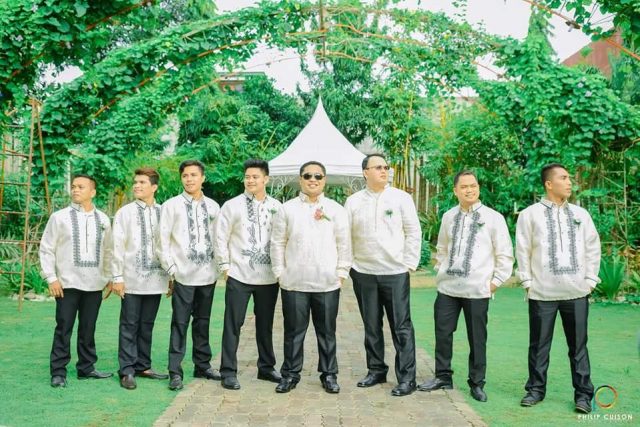Annika R. Uyenco
Week 2
As a Filipino, it was both wonderful and insightful reading Mina Roces' article, Gender, Nation, and the Politics of Dress in Twentieth-Century Philippines. First of all, it was rare to learn about the Philippines in the classroom growing up so it was great to have the country represented in this class. Second of all, I acquired a personal connection when reading about the history of the Philippines' national dress as my family lineage in the Philippines dates back to the past two centuries.
 It was interesting to read about the Barong Tagalog for the second time as I had done a project on the physical material of the Barong for one of my textile classes last quarter. The material of the Barong is very light and somewhat translucent, usually made from pineapple fibers, banana fibers, and other natural fibers. Because the Barong is see-through, it must be worn with a white undershirt, known as a sando in Tagalog. Today, Barongs are worn in cultural and special events such as weddings and debuts (a coming-of-age birthday celebration for a Filipino woman). I've been to many Filipino events in my family and have seen many of my dad, my uncles, and male cousins wear the Barong.
It was interesting to read about the Barong Tagalog for the second time as I had done a project on the physical material of the Barong for one of my textile classes last quarter. The material of the Barong is very light and somewhat translucent, usually made from pineapple fibers, banana fibers, and other natural fibers. Because the Barong is see-through, it must be worn with a white undershirt, known as a sando in Tagalog. Today, Barongs are worn in cultural and special events such as weddings and debuts (a coming-of-age birthday celebration for a Filipino woman). I've been to many Filipino events in my family and have seen many of my dad, my uncles, and male cousins wear the Barong.
For women, there are many other dresses that are considered traditional to the Philippines besides the Terno. My favorite is the Balintawak. This dress is a more subtle version of the Terno. The sleeves are still puffed but the dress is made shorter for more movement. Movement is necessary when wearing the Balintawak because this dress is worn when in the Philippines' national dance, Tinikling. Historically, the dress also symbolized a woman's young spirit and her blitheness.
What can nations do to maintain the importance, tradition, and symbolism of one's national dress from complete eradication or appropriation?
https://philippinefolklifemuseum.org/portfolio-items/balintawak/
Image 1: https://www.kasal.com/the-barong-tagalog
Image 2: https://philippinestravelsite.com/tinikling-the-philippines-national-dance/
No comments:
Post a Comment